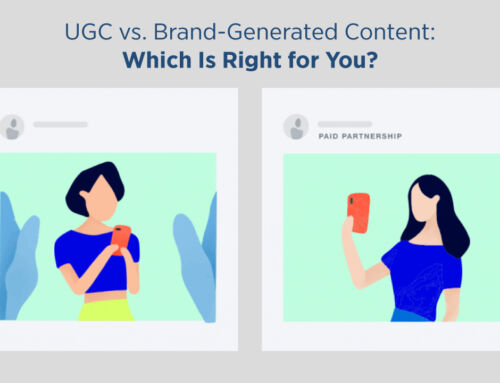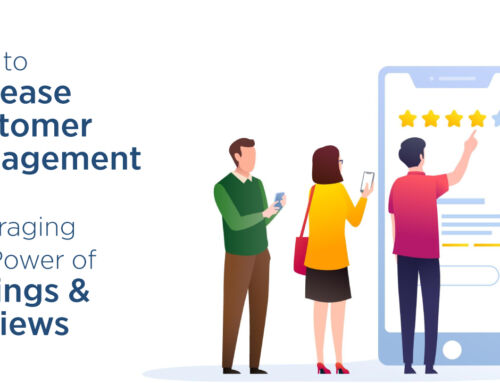Ever gotten an essay-length rant in your Instagram comments about someone’s disappointment with your product?
Or how about when an unhappy client hits a one-star review on your Google business page, airing out all their grudges?
And then there’s the classic – a former employee choosing to cause a scene with a dramatic Facebook post.
Look, we get it. Handling this kind of stuff is never fun. But let’s realize it – negative feedback is part and parcel of the online business landscape.
It’s like that old saying, “Every rose has its thorn.”
Complaints will pop up now and then. They might be outsized, unfairly rude, or sometimes, admittedly, spot-on.
But here’s the real deal: it’s not about the complaints themselves – it’s all about how you handle them that counts!
The Power of Negative Reviews

Negative reviews may seem harmful, but they’re actually beneficial for your business growth. Surprisingly, they are some of the most honest and helpful feedback you can receive. They point out specific problems, helping you understand what needs improvement. By addressing negative reviews positively, you can not only protect your company’s reputation but also increase customer loyalty and satisfaction.
Interestingly, a study highlighted by Luisa Zhou shows that 72% of consumers value negative reviews because they provide insight that helps in making purchasing decisions. And 67% prefer to see a mix of positive and negative reviews. This indicates that both types of feedback are crucial for establishing a product’s credibility.
In this blog post, we will explore how to handle negative reviews and learn from them gracefully. Most importantly, we will discuss how to find value in negative feedback, the steps to turn feedback into positive action, and ways to foster a culture of positive reviews.
Let’s get started!
The Power of Perception
Customers’ perceptions of unfavourable reviews are more complicated than many businesses might predict. Negative reviews can be good for business, contrary to what many companies think. They add trustworthiness to a product or service. Shoppers often doubt excessively positive comments and see negative ones as more honest. When negative reviews are mixed with positive ones, they create a fuller, more believable picture and help people choose wisely.
Research from Spiegel Research Center shows why negative comments shouldn’t be feared:
– 95% of shoppers suspect censorship or fakes if they don’t see any negative reviews.
– 92% are hesitant to buy something with no reviews at all.
– 82% actively look for negative feedback before making a purchase.
– 72% of business buyers find that negative reviews give them better insights into a product.
These findings highlight that not all negative feedback is harmful. In fact, how a company deals with negative comments can turn the situation around. Responding well to criticism often softens its impact and can win over customers.
Extracting Value from Criticism
By analyzing negative reviews, you can identify areas for improvement and turn feedback into actionable strategies. Here’s how to extract value from criticism:
Customer Journey Mapping
Negative reviews often highlight pain points in the customer journey. By mapping out the customer journey and pinpointing where issues commonly arise, businesses can gain a clearer understanding of where improvements are needed.
- Identify Pain Points: Look for recurring themes in negative feedback. Are customers frequently mentioning long wait times, unresponsive customer service, or difficulties navigating your website? These patterns can reveal specific stages in the customer journey that require attention.
- Visualize the Journey: Create a customer journey map that outlines each touchpoint a customer interacts with, from initial contact to post-purchase follow-up. This visual representation can help you see where negative experiences are happening and why.
- Implement Changes: Once you’ve identified the pain points, take actionable steps to address them. For example, if customers are complaining about long response times, consider investing in a more robust customer service platform or additional training for your team.
Competitive Analysis
Understanding your competitors’ negative reviews can also provide insights into industry-wide issues and opportunities for differentiation.
- Analyze Competitor Feedback: Look at the negative reviews of your competitors. What common complaints do their customers have? Are there any areas where your competitors are consistently falling short?
- Identify Opportunities: Use this information to your advantage. If customers are unhappy with a competitor’s customer service, you can emphasize your commitment to excellent service in your marketing materials. If a competitor’s product frequently malfunctions, ensure your product’s quality is a focal point in your advertising.
- Benchmarking: Compare your reviews to those of your competitors. This can help you understand where you stand in the market and identify areas where you can improve or capitalize on your strengths.
Leverage Sentiment Analysis
Sentiment analysis tools can help you analyze large volumes of feedback to identify trends and overall customer sentiment.
- Use Tools for Analysis: Platforms like Google Analytics, Hootsuite Insights, or specialized sentiment analysis tools can process and analyze customer feedback at scale. These tools use natural language processing to determine whether the sentiment of a review is positive, negative, or neutral.
- Identify Trends: By aggregating data from numerous reviews, you can spot trends that might not be obvious from individual comments. For example, if a significant number of reviews mention “slow service” or “unfriendly staff,” these are trends that need to be addressed.
- Prioritize Issues: Sentiment analysis can help you prioritize which issues to tackle first based on their frequency and the intensity of the sentiment expressed. Addressing the most critical pain points first can lead to significant improvements in customer satisfaction.
Real-Time Examples of Successful Use of Negative Reviews
Many businesses have successfully turned negative reviews into opportunities for growth by actively listening to their customers and making necessary changes.
- Starbucks: Starbucks actively monitors social media and review platforms to gather feedback. When customers expressed frustration over long wait times, Starbucks implemented new processes and mobile ordering to streamline service.
- Domino’s Pizza: After receiving negative feedback about the quality of their pizza, Domino’s launched a marketing campaign addressing the criticisms head-on and made substantial changes to their recipe. This transparency and willingness to improve helped rebuild their brand image.
By mapping the customer journey, analyzing competitor feedback, and leveraging sentiment analysis, businesses can extract valuable insights from negative reviews. This proactive approach enhances customer satisfaction and contributes to business growth and improved reputation.
Incorporate these strategies into your business operations to turn negative reviews into a powerful tool for improvement and customer engagement.
From Feedback to Action
Turning negative reviews into actionable business improvements is a strategic process that involves careful analysis and implementation. Here’s how businesses can effectively incorporate customer feedback into their operations, supported by practical examples and the importance of employee involvement.
Implementation Strategies
Successfully incorporating feedback into business processes requires a structured approach. Here are some practical tips to guide you:
- Prioritize Feedback: Not all feedback will be of equal importance. Use sentiment analysis tools to identify the most frequent and critical issues. Prioritize addressing these first.
- Develop an Action Plan: For each identified issue, create a specific action plan. This should include the steps to be taken, responsible parties, and a timeline for implementation.
- Integrate Feedback into Training: Regularly update employee training programs to include lessons learned from customer feedback. This ensures that staff are aware of common issues and know how to address them.
- Monitor and Adjust: After implementing changes, continue to monitor customer feedback to gauge the effectiveness of your actions. Be ready to make further adjustments as needed.
- Communicate Changes: Inform your customers about the changes you’ve made based on their feedback. This shows that you value their input and are committed to improving their experience.
Real-world example –
Zappos: Known for its customer service, Zappos uses feedback to continuously improve its operations. When customers complained about long shipping times, Zappos invested in their logistics and improved delivery times.
They also empower their customer service team to make on-the-spot decisions to enhance the customer experience, which has strengthened customer loyalty.
Conclusion
Are you ready to turn negative reviews into business opportunities? Contact us today for a free consultation or assessment.
Our experts at Caddle can help you develop a streamlined approach to managing and leveraging customer feedback, ensuring your business not only survives but thrives in a competitive market.
Don’t wait—take the first step toward transforming your online reputation now.





Leave A Comment